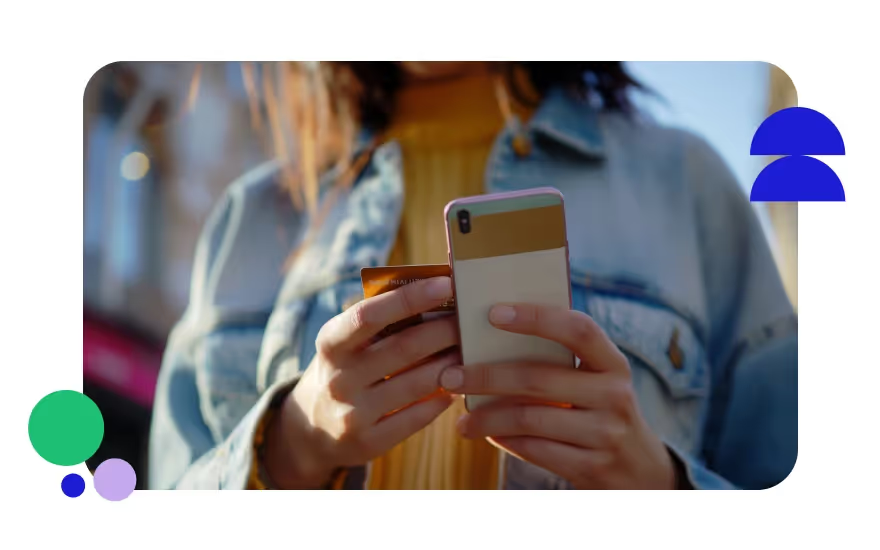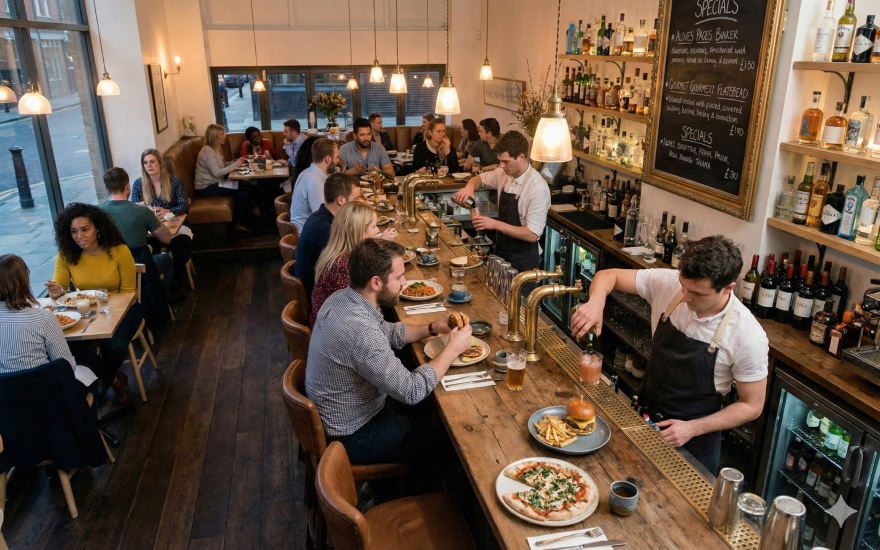Understanding Restaurant Reservation Deposits and No-Show Fees

About 30% of diners have "ghosted" a restaurant. Lucio Galletto, owner of Lucio's Italian Restaurant, noted that if one table for two doesn't show up, it costs the restaurant a day's wages for one worker. Just six no-shows can erase the slim profits of a 40-seat restaurant.
That's how serious the financial impact of a no-show is. Thus, some dining establishments have a restaurant reservation deposit and no-show fee policy to prevent no-shows and last-minute cancellations. For restaurant owners, this provides financial security, but for diners, it can be a deterrent and inconvenience when booking.
Let’s do a deep dive into restaurant reservation deposits and no-show fees and whether or not they are right for your restaurant.
What Are Restaurant Reservation Deposits and No-Show Fees?
Many restaurants have policies to mitigate no-shows and cancellations. By charging a fee, the restaurant still makes some money, even if it’s not the full amount the customer would have spent. When a customer books a table, they pay a restaurant reservation fee. The payment is upfront and applied to the final bill. Depending on the policy, the deposit can be a predetermined amount or variable. If it's fixed, the customer pays a set amount regardless of the number of diners. Otherwise, factors like the reservation time and number of guests dictate the deposit. This policy is usually non-refundable. However, some restaurants offer a partial refund if the customer calls to cancel ahead of time.
Alternatively, a no-show fee is applied if a customer misses their reservation. When booking, they must provide credit card details. Failing to cancel on time incurs this fee, which can vary from restaurant to restaurant.
More and more restaurants have these policies to recoup some financial loss from canceled reservations.
The Benefits of Reservation Deposits and No-Show Fees for Restaurants
Accepting restaurant reservations with deposits enables your restaurant to streamline operations better. Having this policy in place can turn tentative bookings into reliable revenue by:
Discouraging Cancelations or No-Shows
Deposits underline the commitment made to the restaurant. When your customer has something to lose (in this case, money), they'll be more mindful of their responsibility. If they're unable to visit due to a change in plans, thinking of their deposit can nudge them to cancel the reservation ahead of time. This way, the restaurant can free up the reserved table for other paying customers.
Increasing Revenue
Having a reservation deposit and a no-show fee provides a safety net for your business. Even if the customer is a no-show, the policy secures some revenue. There's also a potential for increased profit since you can provide the table for walk-ins.
Encouraging On-Time Arrival
Paying a deposit ensures that customers have a personal stake in honoring their booking and arriving on time. This keeps the tables turning efficiently, allowing you to serve more customers.
Elevating Your Brand Image
A restaurant that requires a reservation deposit subtly positions itself as a sought-after destination. It emphasizes a high demand for tables. It also creates a sense of exclusivity and appeals to diners looking for a special place to celebrate an occasion or treat themselves to a night out.

The Drawbacks of Reservation Deposits and No-Show Fees
Deposits provide clear benefits. However, they also come with potential disadvantages that you must take into account:
Discourages People from Booking
Booking a table is already a commitment, and for some, adding a deposit might feel excessive. Casual diners or those unfamiliar with your restaurant may choose other dining places if they're hesitant to pay a fee upfront. Most people would only "take the risk" if the restaurant is already well-established or there's hype behind it. Often, the risk of a last-minute emergency or bad weather (who would want to eat al fresco when it's cold and rainy) discourages diners from agreeing to a cancelation fee.
Can Trigger Negative Reactions
Sometimes, even if you've clearly communicated the policy and expectations, people can still get upset when charged a no-show fee. Appeasing an irate customer takes time, as does dealing with hostile and disgruntled online reviews. These negative reactions can potentially damage the restaurant's brand image while putting extra strain on your team.
Added Booking Step
Charging a deposit or explaining a no-show fee are extra steps in booking. This can be inconvenient for some who make reservations on the go and may not have a credit card readily available. Moreover, speed and mobile optimization are crucial if you take reservations online. Visitors are 61% more likely to leave if your site is hard to navigate. Multiple steps and reservation fees can frustrate customers, causing them to abandon booking. To avoid this, keep the reservation form brief and include all important details. For phone reservations, train your staff to communicate the policy clearly and efficiently.
Clashes with Your Brand Image
Restaurants with warm and friendly reputations may find having a reservation deposit or no-show fee at odds with their brand image. Consider if the deposits align with the image and experience you want your business to cultivate.
Legal Considerations
Running a restaurant requires legal compliance and maneuvering. In California, the Junk Fee Prevention Act stops businesses from adding hidden charges to bills. Local laws may control reservation deposits and no-show fees, so it's essential to follow these rules before implementing such policies.

Tips for Implementing Restaurant Reservation Deposits and No-Show Fees
Communicate Policies During Booking
When customers book a reservation by phone, ensure your staff clearly explain the reservation deposit and no-show fee. If customers have questions or feel unsure about booking, your staff should be ready to explain why these policies exist and reassure them that it won't spoil their dining enjoyment. Make sure they know the policies' ins and outs so they can provide accurate answers. Ensure that they convey a positive, warm tone and always maintain professionalism. It's also wise to highlight the benefits of securing a reservation with a deposit. Let your host, hostess, or manager emphasize how the deposit ensures customers have a table even during peak hours or season. If the customer books online, ensure the policy is clear and easy to find.
Be Accommodating
Sometimes people have valid reasons for not showing up, like a medical or family emergency or being called in to work at the last minute. Show understanding by waiving the fee in such cases. This flexibility can enhance your restaurant's reputation and build customer loyalty.
Additionally, automatic reminders should be sent to guests on the day of the reservation and one hour prior. These reminders should include booking details and a brief overview of the no-show policies, helping guests remember their reservations and reducing no-shows.
Explore Deposit and Payment Strategies
Check industry reports and benchmarks to see if a fixed or tiered deposit works best for your restaurant, being mindful of your restaurant’s size and style. A deposit is practical for small, high-end restaurants due to their high costs and limited seating, but it might be off-putting for large, family-friendly restaurants that focus on a casual, welcoming experience.
Alternatives to Restaurant Reservation Deposits and No-Show Fees
Reservation deposits and no-show fees aren't suited for all dining establishments. For some restaurants, these policies can push customers away. But there are alternatives to help restaurants minimize income loss:
- Remind the customer of their reservation through email or text a day or two before their appointment. Use automation tools to streamline this process.
- Employ a waitlist system to accommodate casual diners or customers with a more flexible schedule. Guests can add their names to the waitlist via phone or your restaurant's website, and you can contact them when a table opens up.
- Use a reservation platform that easily allows customers to cancel their reservations online, allowing a new customer to book the table immediately.

Final Thoughts on Restaurant Reservation Deposits and No-Show Fees
Canceled bookings and no-shows can cripple operations and impact your restaurant's revenue. Having a reservation deposit and no-show fee in place reduces this risk. It's a reality that some diners may not appreciate these policies, but if you provide fair payment options and explain them clearly, the benefits of having them will outweigh the few drawbacks.
To help you streamline and automate your restaurant operations, Push provides top-notch services and solutions. Book a demo to learn more.



